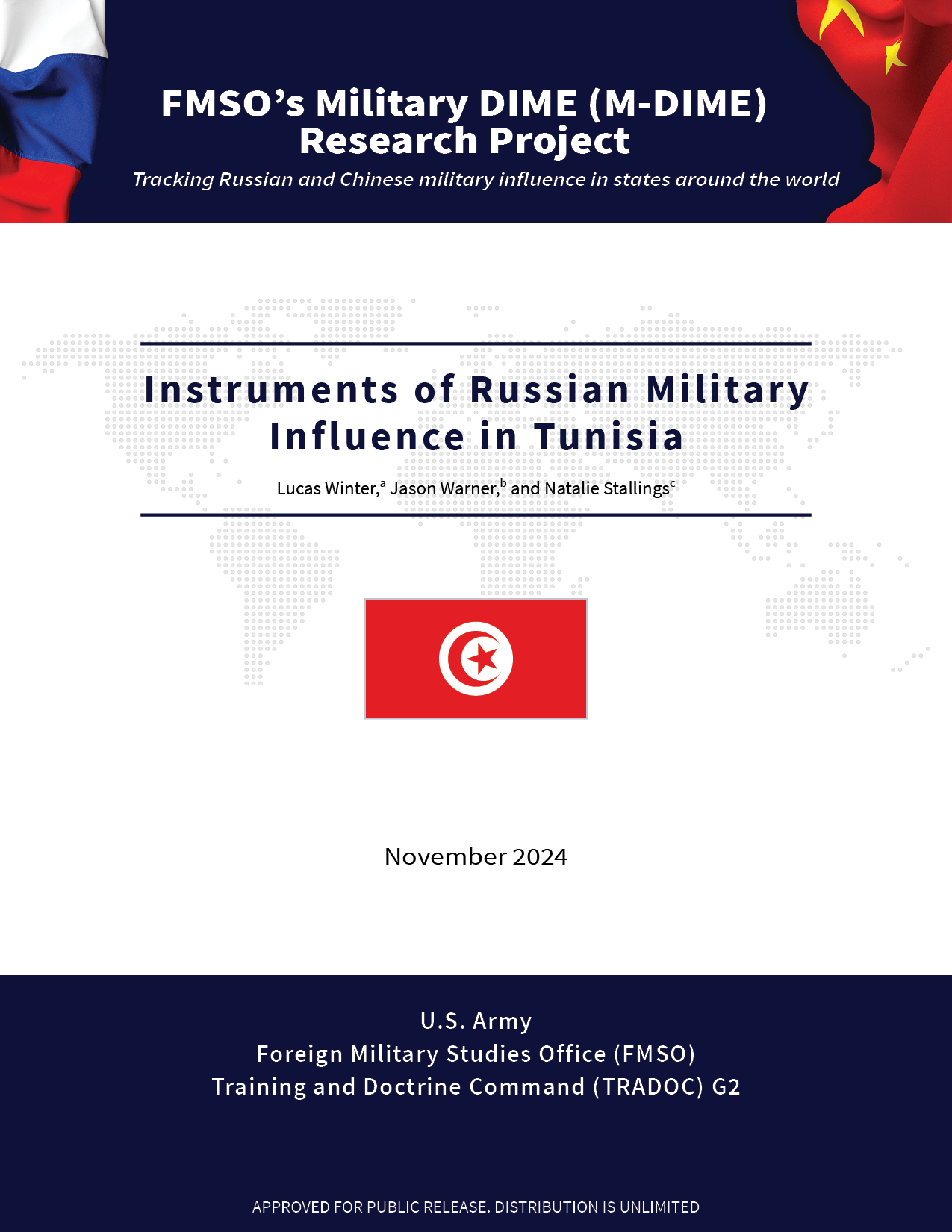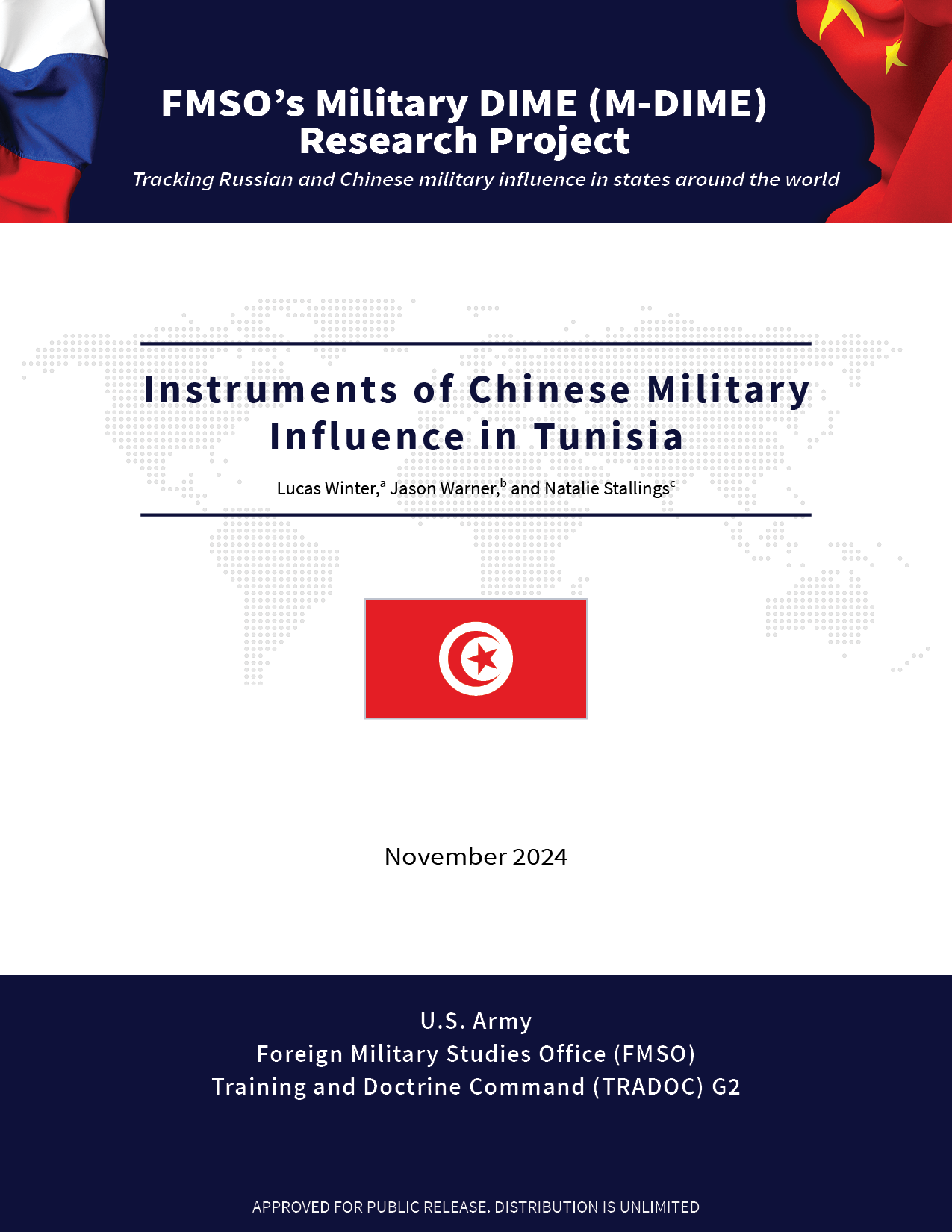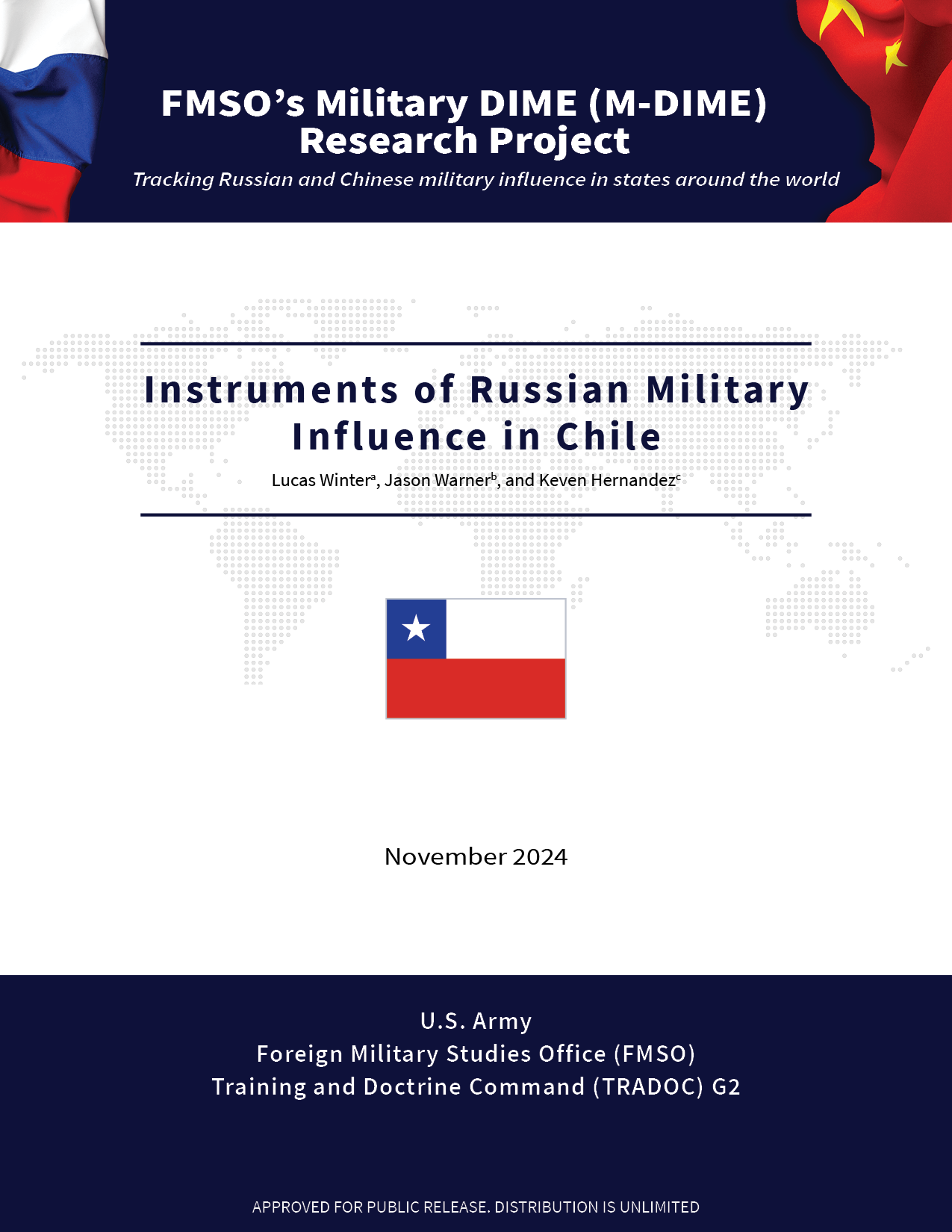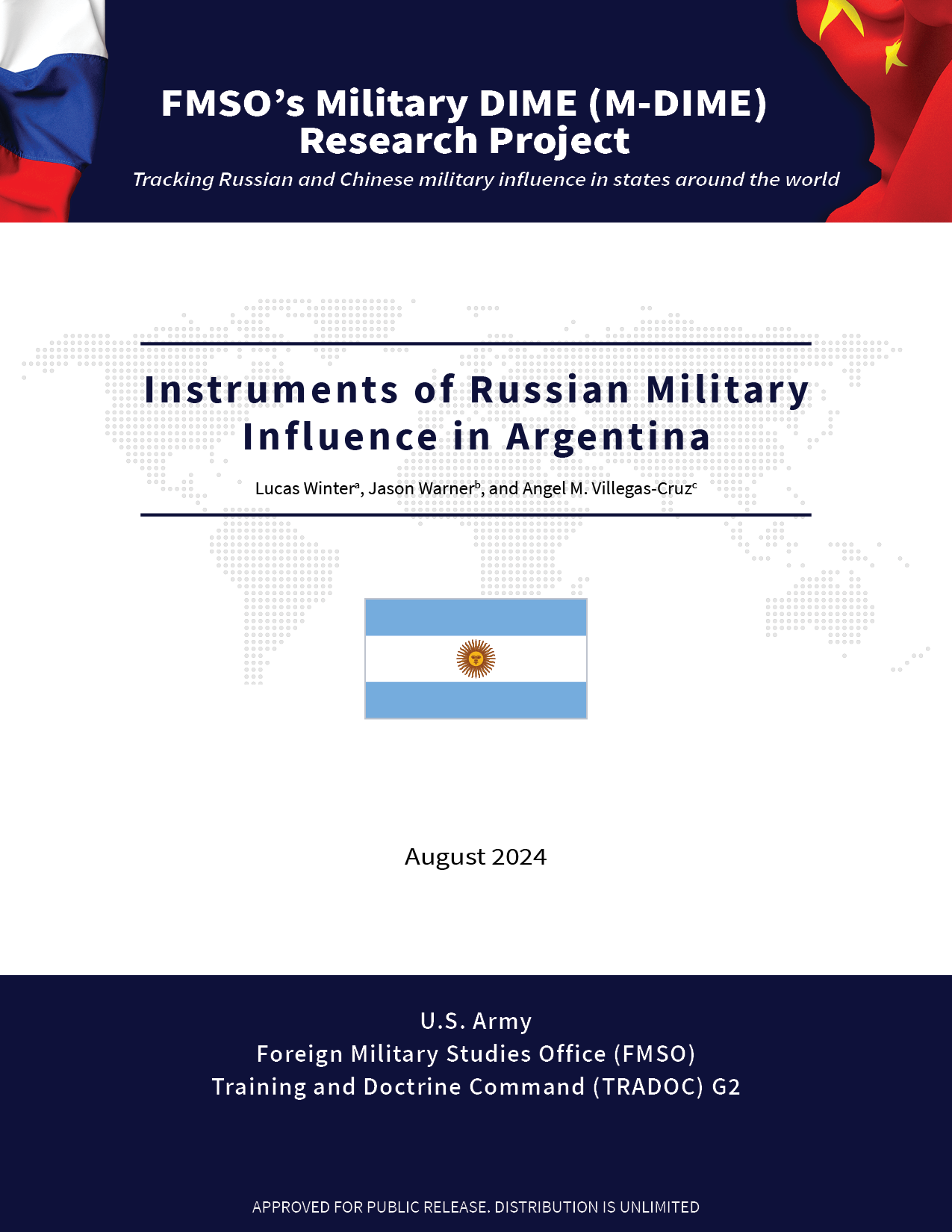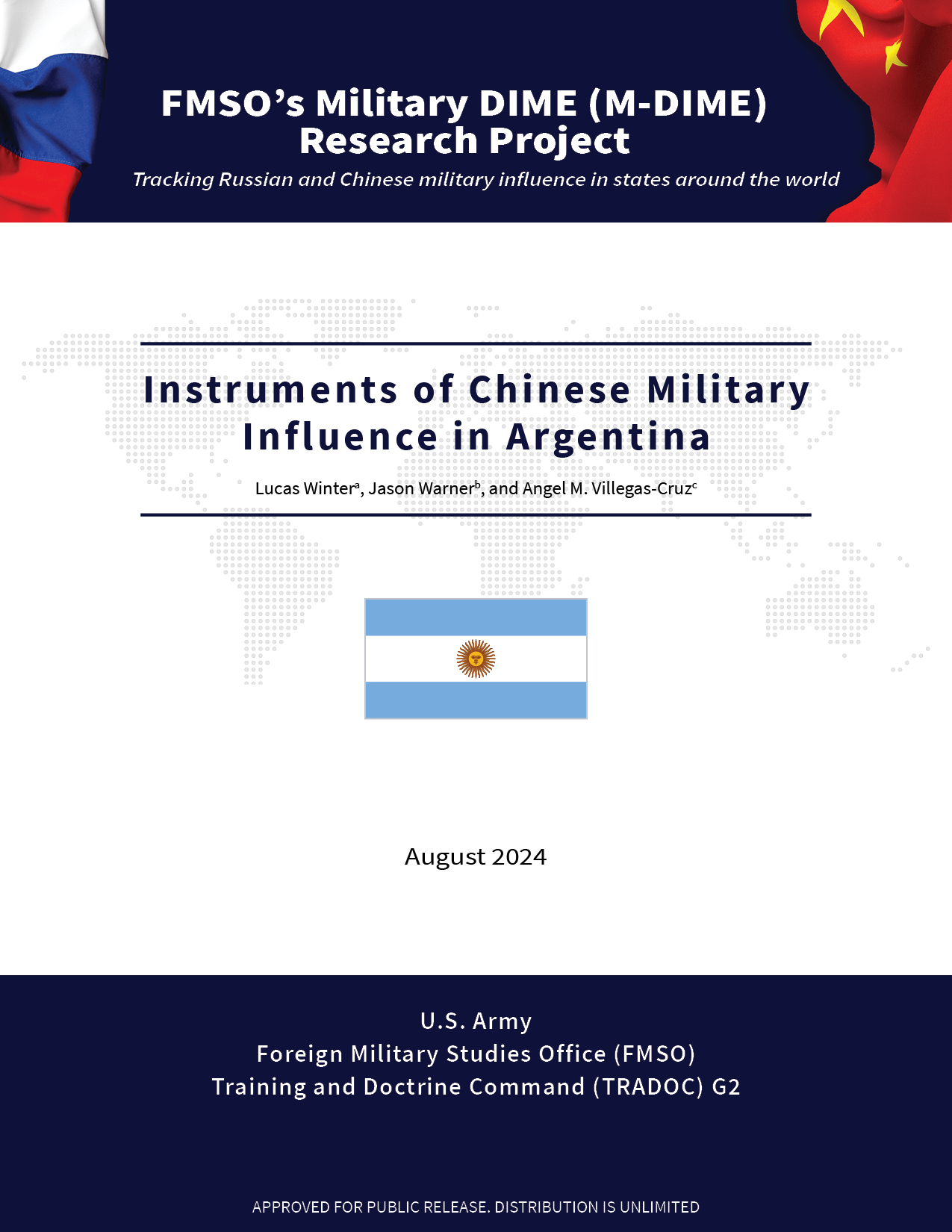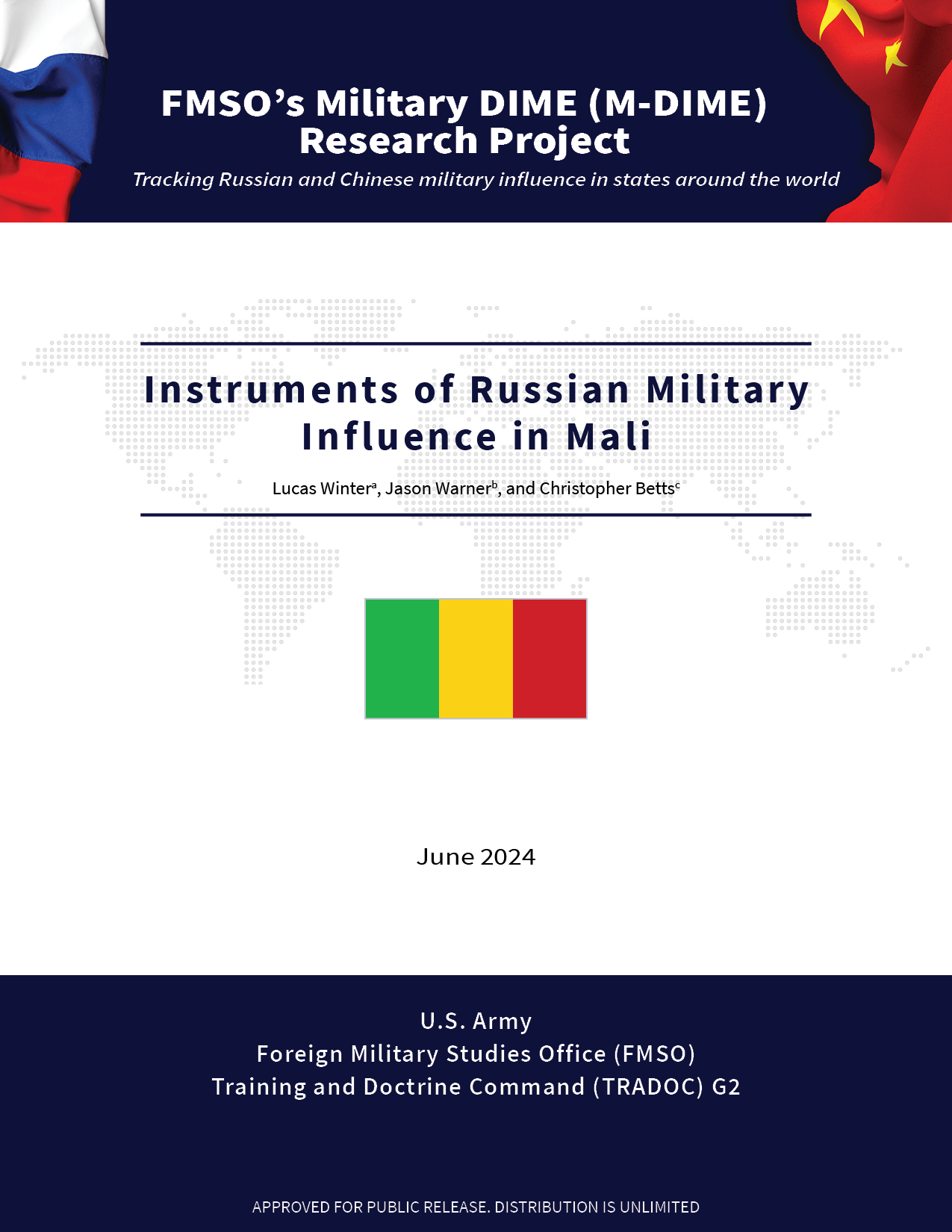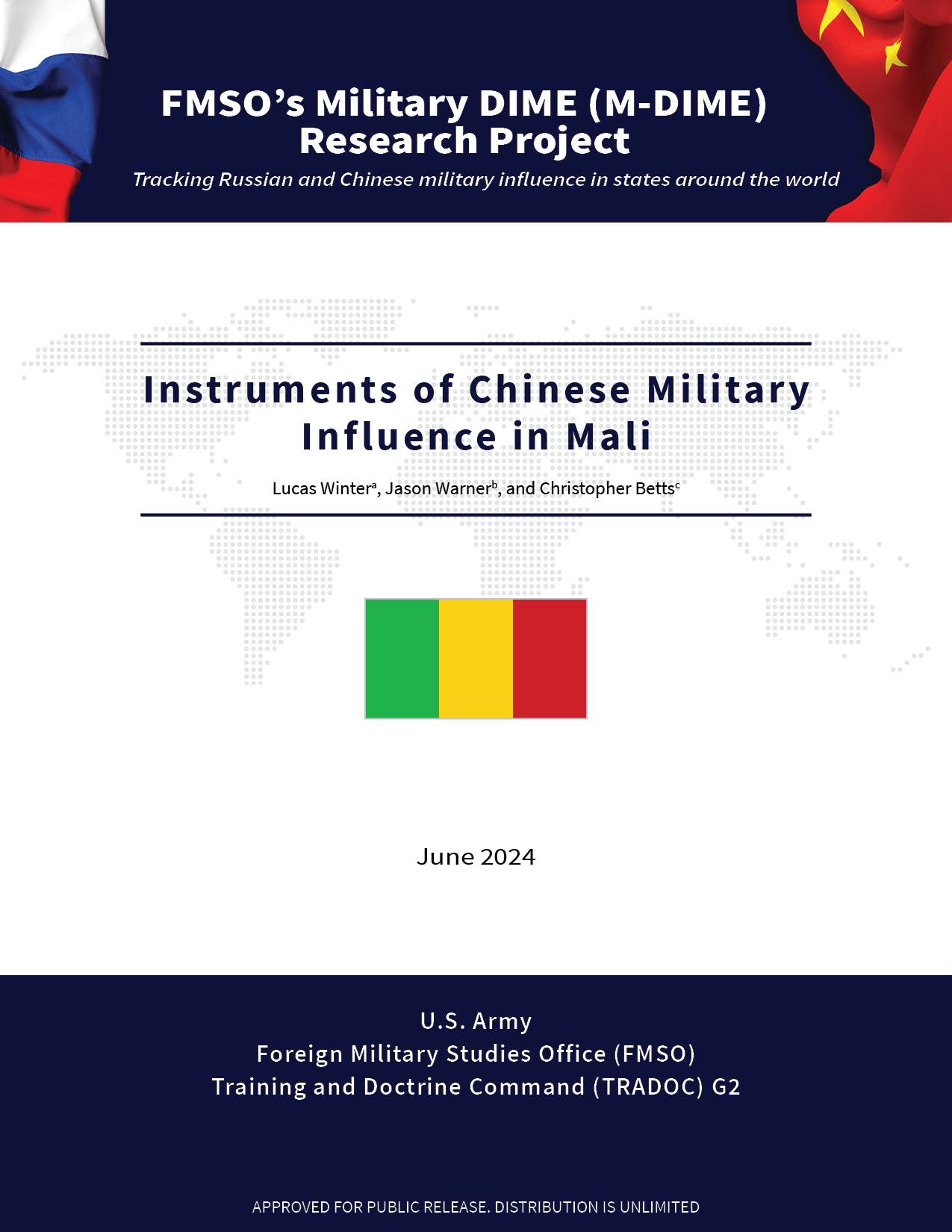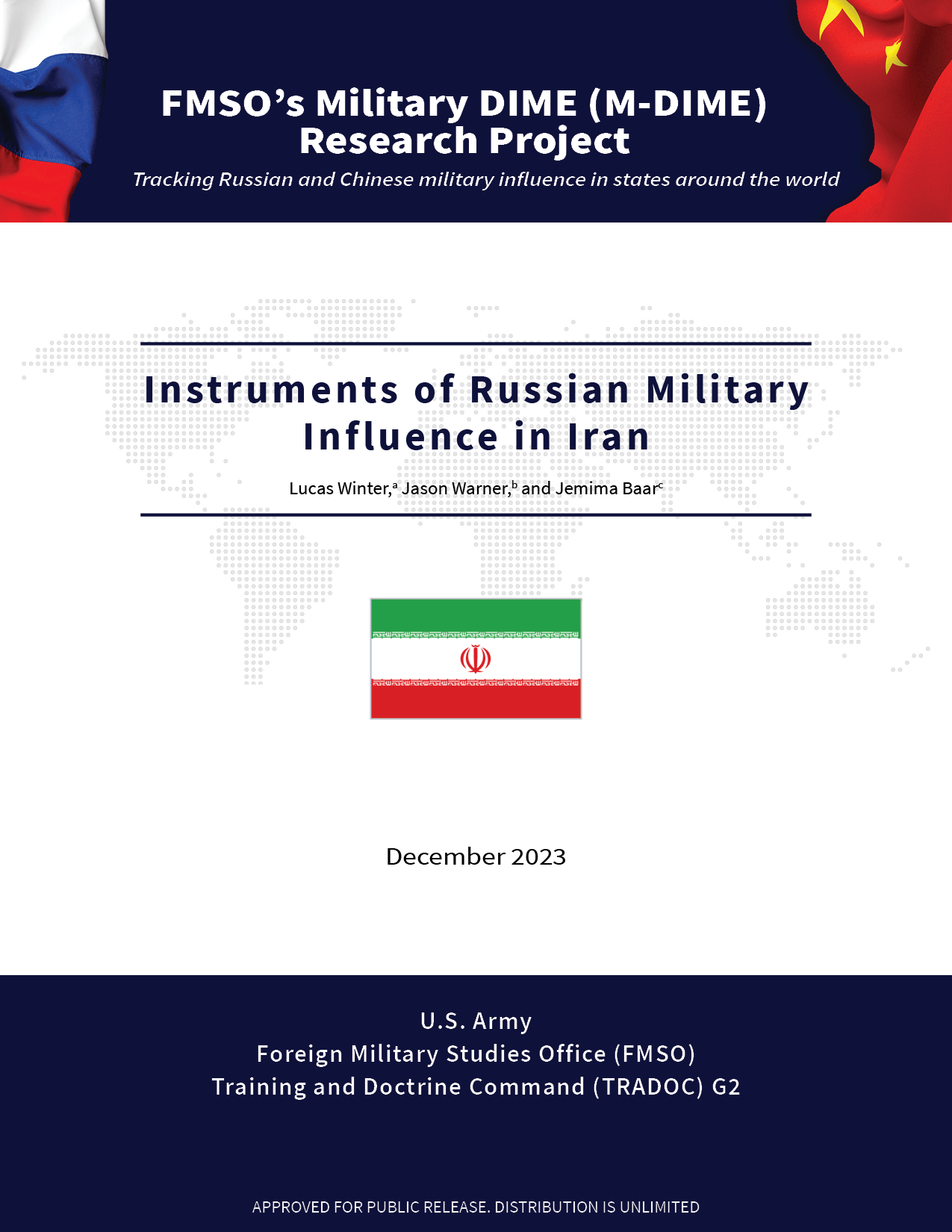Overview of FMSO’s M-DIME Research Project
The Military DIME (M-DIME) Research Project is a dynamic effort from researchers at the U.S. Army Training and Doctrine Command’s Foreign Military Studies Office (FMSO). Its goal is to provide U.S. Army leaders with a clear, comparative understanding of how China and Russia employ instruments of national power to obtain military influence around the world. The M-DIME framework is derived from the “DIME” concept, which classes instruments of national power into four types: Diplomatic, Informational, Military, and Economic. Based on this concept, the M-DIME framework gives more narrow attention to the instruments that China and Russia employ to gain military influence in third-party countries.
The M-DIME framework’s purpose is to track and analyze the military influence of “Benefactor” countries (i.e. China and Russia) in select “Recipient” countries in Africa, Latin America, the Middle East, and South and Southeast Asia. Benefactor countries are assumed to engage in activities that result in them having increased military influence in Recipient countries to gain leverage over global rivals, competitors, and adversaries; for China and Russia, this means the United States. Within this framework, “military influence” is defined as the ability of a Benefactor country to shape or alter the attitudes, behaviors, and capabilities of actors within—and entities associated with—the armed forces of Recipient countries.
The M-DIME framework identifies 12 distinct instruments of national power employed by Benefactor countries to gain military influence in Recipient countries, three for each of the DIME categories. They are as follows:
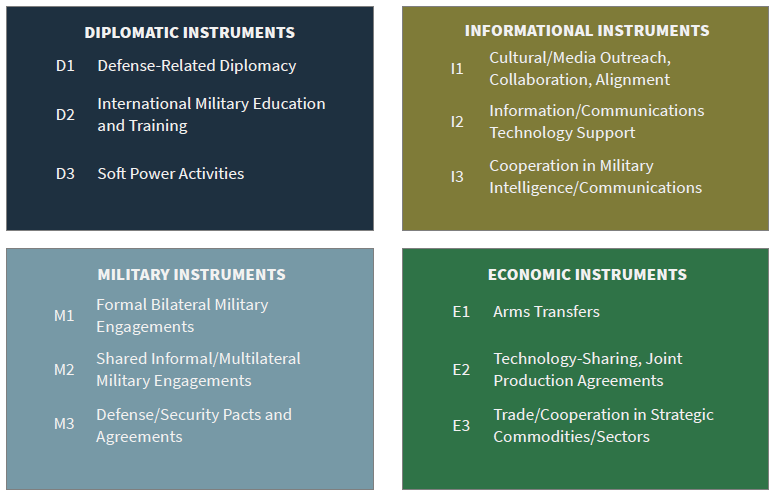
M-DIME analysis is based on qualitative assessments of Benefactor influence in Recipient countries along each of the 12 M-DIME instruments of influence. These assessments are made for the Benefactor’s Current Influence(assessed as Very High, High, Medium, Low, Very Low, or Unobserved) and Projected Influence (assessed as Increasing, Steady, Decreasing, or Unknown). Current assessments are made based on activities from 2012 to the present, while future assessments are three-year forecasts.
The bulk of activities considered in the M-DIME Research Project involve members of the armed forces or defense sector personnel in both Benefactor and Recipient countries. Such activities include formal and informal military-to-military diplomacy, security cooperation engagements, and arms transfers. However, the M-DIME Research Project also tracks and analyzes Chinese and Russian activities that employ non-military instruments of influence but ultimately bear on the decision-making and capabilities of the Recipient country’s armed forces. Such activities include Chinese and Russian collaboration with Benefactor states in media, communications technology, and strategic sectors.
The M-DIME Research Project’s findings are derived from open-source research. Each M-DIME product is produced with the collaboration of analysts from across FMSO, frequently with the assistance of non-Department of Defense subject matter experts coming from academia, think tanks, and the private sector. Given its basis in open-source research, the M-DIME Research Project has an inherent limitation. It cannot track Chinese and Russian military influence activities that are deliberately kept secret. Consequently, assessments of Chinese and Russian influence based on instruments for which secrecy is important or where information would typically be classified by the Benefactor or Recipient countries—for instance, military-technology sharing or intelligence collaboration—are acknowledged to be made with low confidence. In certain cases, assessments are not made where open-source data is considered inconclusive.
In sum, the M-DIME Research Project is a tool for U.S. Army and U.S. Government personnel to better understand the instruments of national power employed by China and Russia to gain global military influence and the impact these activities have on U.S. national security interests. Over time, FMSO will expand the body of research and assessments based on this framework, increasing its comparative value across Benefactor and Recipient countries.
Recent M-DIME Publications
See below the most recent M-DIME Research Project reports published by FMSO.

